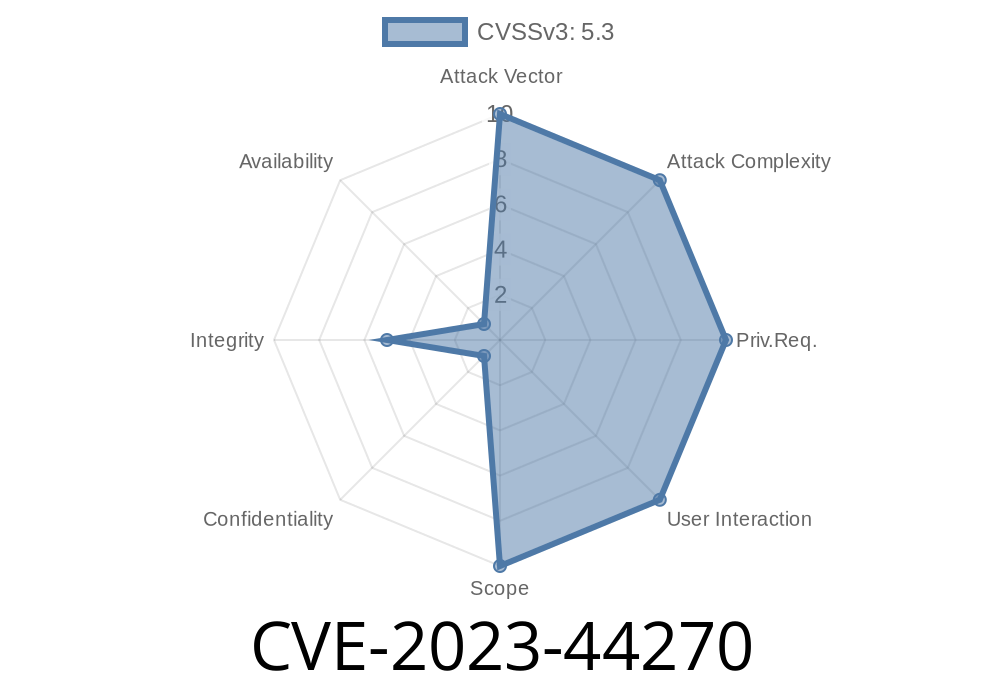If you’re using PostCSS before version 8.4.31—especially as part of a linter or similar tool—there’s a subtle vulnerability (CVE-2023-44270) you need to know about. It lets attackers sneak malicious code through CSS comments in ways PostCSS didn’t expect, which can break your security model if you’re parsing untrusted CSS. This guide is your exclusive, plain-language deep dive, complete with code samples, practical risks, and tips on fixing the hole.
What is CVE-2023-44270?
In short: PostCSS had a comment parsing bug that could let malicious users hide real CSS in comments. After PostCSS processed the file, the code hidden in comments could reappear as active CSS nodes (like rules or properties). If you rely on linting to check for problems, that code might slip right through.
Official advisory and patch:
- GitHub Security Advisory GHSA-7mfc-5pm2-hvr8 (PostCSS)
- NVD Entry for CVE-2023-44270
How It Works (With Simple Example)
Imagine you’re running a linter that uses PostCSS to check uploaded CSS files for problems. You want to block certain risky properties, like position: absolute:
/* Regular CSS comment */
.good { color: blue; }
/* Hidden property injection */
.bad { content: "/*"; position: absolute; /*"; }
If PostCSS is not careful, it might treat position: absolute; as if it was just part of a comment. But with this bug, crafty attackers could write the comment in such a way that position: absolute; is parsed as a real property even though it *looks* commented out.
Here's a dangerous snippet you *might* see
/* Start a comment }
/*; color: black; } body { background: red; /* */
Depending on how PostCSS parses this, body { background: red; } might pop up in the output as a real rule, even though it was hidden inside what looks like a comment.
Digging Deeper: Why Did This Happen?
PostCSS’s parser didn't always handle "unclosed" or specially crafted comment boundaries correctly. By faking the end of a comment (for example, using { or ; cleverly), attackers could inject real CSS properties or rules that the parser would treat as legitimate nodes.
- Normal behavior: Content inside /* ... */ is ignored.
- Buggy behavior: With a clever opening and missing or fake closing, PostCSS’s parser might *not* ignore some of the comment's contents, making them show up as live CSS in the final output.
This vulnerability is most dangerous for automated tools
- Linters using PostCSS may *miss* malicious rules. Attackers could hide settings or even @import rules in the comments, dodging your security checks.
- Build/Transformation Pipelines: Downstream tools could receive and process “phantom” rules, leading to style glitches, CSP bypasses, or even XSS in edge cases.
Imagine your linter blocks !important properties
/* Innocent looking */
.safe { color: blue; }
/* A sneaky chunk */
.unsafe { /* color: red; !important; /* ignore this */ }
body { color: green; }
With this CVE, body { color: green; } could land in your finished CSS, totally bypassing the linter's rules.
How to Exploit
A basic exploit is as simple as submitting CSS files with malformed comments to any app using PostCSS older than 8.4.31 for linting purposes.
Proof of Concept CSS
/*
attackers can start a comment and forget to close
.escaped { background: url("https://evil-site.com/x";); }
/*
Also, they can close it later in a tricky way */
After processing, .escaped might be visible as a *real* CSS rule.
Official Fix
Upgrade to PostCSS 8.4.31 or later.
The latest parser handles tricky comment boundaries correctly.
Links:
- PostCSS Changelog (v8.4.31)
Also Consider
- Do not parse untrusted CSS unless you’re always current with PostCSS and closely monitor security.
If you must parse untrusted CSS, pre-sanitize or reject files with suspicious comment syntax.
- Add extra linting rules that check for unusual comment patterns (excessively long comments, excessive { or ; in comments).
Final Thoughts
CVE-2023-44270 is a classic “parser confusion” bug but with serious modern consequences, especially as web tooling grows more automated. If PostCSS powers your CSS linting, parsing, or transformation, upgrade now. Don't let attackers slip code through your comments—keep those boundaries secure.
Want to read more?
- Original CVE entry - NVD
- PostCSS Security Advisory
Stay secure and always keep your dependencies up to date!
Timeline
Published on: 09/29/2023 22:15:11 UTC
Last modified on: 10/10/2023 17:19:55 UTC
